Experimental Analysis and Wear Prediction Model Based on Friction Heat for Dry Sliding Contact
Abstract
1. Introduction
2. Proposal of a Wear Model Based on the Frictional Heating Effect
Experimental Settings
3. Results and Discussion
3.1. Influence of the Initial Positive Contact Pressure on Frictional Heat and Wear Mass
3.2. Influence of the Reciprocating Frequency on Frictional Heat and Wear Mass
3.3. Influence of the Frictional Heating Effect on Normal Contact Load and Wear Mass
3.4. Model Verification
4. Conclusions
- (1)
- The frictional temperature increases with the initial positive contact pressure, reciprocating frequency and friction time.
- (2)
- The wear mass also increases with rising temperature.
- (3)
- The mechanism of frictional thermal wear is analysed. With the generation of frictional heat, the normal force fluctuates periodically, and the wear mass and temperature increase in a cyclic iterative manner in the contact area.
- (4)
- A wear model based on frictional thermal expansion is proposed. The actual wear mass, the predicted wear mass by the modified model and the predicted wear mass by Archard were measured at a reciprocating frequency of 10 Hz, an initial normal contact load of 40 N and a travel distance of 24 m. The results show that the modified model can predict the wear mass more accurately than the traditional Archard wear model, and the accuracy of the modified model is improved by 52.6%, 7.4% and 23.9% for the 316L stainless steel, the 5A06 aluminium alloy and the pure titanium, respectively. Since the proposed model is limited to specific workpiece types and operating conditions, it will be a reliable model for predicting workpiece material wear under these conditions for future studies.
Author Contributions
Funding
Institutional Review Board Statement
Informed Consent Statement
Data Availability Statement
Conflicts of Interest
References
- Davanageri, M.B.; Narendranath, S.; Kadoli, R. Modeling and Optimization of Wear Rate of AISI 2507 Super Duplex Stainless Steel. Silicon 2019, 11, 1023–1034. [Google Scholar] [CrossRef]
- Rao, T.B.; Ponugoti, G.R. Characterization, Prediction, and Optimization of Dry Sliding Wear Behaviour of Al6061/WC Composites. Trans. Indian Inst. Met. 2021, 74, 159–178. [Google Scholar] [CrossRef]
- Khatkar, S.K.; Verma, R.; Sumankant; Thakur, A.; Sharma, R. Optimization and Effect of Reinforcements on the Sliding Wear Behavior of Self-Lubricating AZ91D-SiC-Gr Hybrid Composites. Silicon 2021, 13, 1461–1473. [Google Scholar] [CrossRef]
- Archard, J.F. Contact and Rubbing of Flat Surfaces. J. Appl. Phys. 1953, 24, 981–988. [Google Scholar] [CrossRef]
- Porter, J.H.; Brake, M.R.W. Towards a predictive, physics-based friction model for the dynamics of jointed structures. Mech. Syst. Signal Process. 2023, 192, 110210. [Google Scholar] [CrossRef]
- Wei, X.K.; Meng, H.F.; He, J.H.; Jia, L.M.; Li, Z.G. Wear analysis and prediction of rigid catenary contact wire and pantograph strip for railway system. Wear 2020, 442, 203118. [Google Scholar] [CrossRef]
- Popov, V.L.; Pohrt, R. Adhesive wear and particle emission: Numerical approach based on asperity-free formulation of Rabinowicz criterion. Friction 2018, 6, 260–273. [Google Scholar] [CrossRef]
- Yu, G.; Xia, W.; Song, Z.; Wu, R.; Wang, S.; Yao, Y. Wear-life analysis of deep groove ball bearings based on Archard wear theory. J. Mech. Sci. Technol. 2018, 32, 3329–3336. [Google Scholar] [CrossRef]
- Tabrizi, A.T.; Aghajani, H.; Saghafian, H.; Laleh, F.F. Correction of Archard Equation for Wear Behavior of Modified Pure Titanium. Tribol. Int. 2021, 155, 106772. [Google Scholar] [CrossRef]
- Yla, B.; Twl, A.; Bdb, C. Dynamic changes of mechanical properties induced by friction in the Archard wear model. Wear 2019, 428, 366–375. [Google Scholar] [CrossRef]
- Dyck, T.; Bund, A. An adaption of the Archard equation for electrical contacts with thin coatings. Tribol. Int. 2016, 102, 1–9. [Google Scholar] [CrossRef]
- Pastewka, L.; Moser, S.; Moseler, M. Atomistic insights into the running-in, lubrication, and failure of hydrogenated diamond-like carbon coatings. Tribol. Lett. 2010, 39, 49–61. [Google Scholar] [CrossRef]
- Aghababaei, R.; Zhao, K. Micromechanics of material detachment during adhesive wear: A numerical assessment of Archard’s wear model. Wear 2021, 476, 203739. [Google Scholar] [CrossRef]
- Milanese, E.; Brink, T.; Aghababaei, R.; Molinari, J.-F. Emergence of self-affine surfaces during adhesive wear. Nat. Commun. 2019, 10, 1116. [Google Scholar] [CrossRef] [PubMed]
- Popova, E.; Popov, V.L.; Kim, D.E. 60 years of Rabinowicz’ criterion for adhesive wear. Friction 2018, 6, 341–348. [Google Scholar] [CrossRef]
- Lichtenberg, K.; Weidenmann, K.A. Effect of Reinforcement Size and Orientation on the Thermal Expansion Behavior of Metallic Glass Reinforced Metal Matrix Composites Produced by Gas Pressure Infiltration. Thermochim. Acta 2017, 654, 85–92. [Google Scholar] [CrossRef]
- Wu, C.; Chen, F.; Long, X. The self-excited vibration induced by friction of the shaft-hull coupled system with the water-lubricated rubber bearing and its stick-slip phenomenon. Ocean. Eng. 2020, 198, 107002. [Google Scholar] [CrossRef]
- Shan, C.; Zhang, M.; Zhang, S.; Dang, J. Prediction of machining-induced residual stress in orthogonal cutting of Ti6Al4V. Int. J. Adv. Manuf. Technol. 2020, 107, 2375–2385. [Google Scholar] [CrossRef]
- Topolski, K.; Brynk, T.; Garbacz, H. Elastic modulus of nanocrystalline titanium evaluated by cyclic tensile method. Arch. Civ. Mech. Eng. 2016, 16, 927–934. [Google Scholar] [CrossRef]
- Bahri, A.; Guermazi, N.; Bargui, M.; Elleuch, K. Estimation of the elastic modulus of the alumina coated AA1050 aluminum: Modeling and experiments. Mater. Sci. Eng. A 2016, 670, 188–195. [Google Scholar] [CrossRef]
- Ferriell, W.D.; Batt, G.S.; Desjardins, J.D. Finite element validation of 3D American football faceguard structural stiffness models. Proc. Inst. Mech. Eng. Part P J. Sports Eng. Technol. 2021, 235, 201–211. [Google Scholar] [CrossRef]
- Fattah-Alhosseini, A.; Keshavarz, M.K.; Mazaheri, Y.; Ansari, A.R.; Karimi, M. Strengthening mechanisms of nano-grained commercial pure titanium processed by accumulative roll bonding. Mater. Sci. Eng. A 2017, 693, 164–169. [Google Scholar] [CrossRef]
- Li, W. Experimental study on tensile mechanical behaviors of 5A06 aluminum alloy under short time elevated temperature. In Proceedings of the Fourth International Conference on Experimental Mechanics, Singapore, 18–20 November 2009. [Google Scholar] [CrossRef]
- Mao, X.; Kang, S.H.; Kim, T.K.; Kim, S.C.; Oh, K.H.; Jang, J. Microstructure and Mechanical Properties of Ultrafine-Grained Austenitic Oxide Dispersion Strengthened Steel. Metall. Mater. Trans. A 2016, 47, 5334–5343. [Google Scholar] [CrossRef]
- Renaudin, P.; Blancard, C.; Faussurier, G.; Noiret, P. Combined Pressure and Electrical-Resistivity Measurements of Warm Dense Aluminum and Titanium Plasmas. Phys. Rev. Lett. 2002, 88, 215001. [Google Scholar] [CrossRef]
- Getmanskii, I.V.; Koval, V.V.; Minyaev, R.M.; Boldyrev, A.I.; Minkin, V.I. Supertetrahedral Aluminum—A New Allotropic Ultralight Crystalline Form of Aluminum. J. Phys. Chem. C 2017, 121, 22187–22190. [Google Scholar] [CrossRef]
- Deng, Y.; Mao, Z.; Yang, N.; Niu, X.; Lu, X. Collaborative Optimization of Density and Surface Roughness of 316L Stainless Steel in Selective Laser Melting. Materials 2020, 13, 1601. [Google Scholar] [CrossRef]
- Zheng, Z.; Eisenlohr, P.; Bieler, T.R.; Pagan, D.C.; Dunne, F.P.E. Heterogeneous Internal Strain Evolution in Commercial Purity Titanium Due to Anisotropic Coefficients of Thermal Expansion. JOM 2020, 72, 39–47. [Google Scholar] [CrossRef]
- Lalet, G.; Kurita, H.; Heintz, J.-M.; Lacombe, G.; Kawasaki, A.; Silvain, J.-F. Thermal expansion coefficient and thermal fatigue of discontinuous carbon fiber-reinforced copper and aluminum matrix composites without interfacial chemical bond. J. Mater. Sci. 2014, 49, 397–402. [Google Scholar] [CrossRef]
- Yakout, M.; Elbestawi, M.A.; Veldhuis, S.C. A study of thermal expansion coefficients and microstructure during selective laser melting of Invar 36 and stainless steel 316L-ScienceDirect. Addit. Manuf. 2018, 24, 405–418. [Google Scholar] [CrossRef]

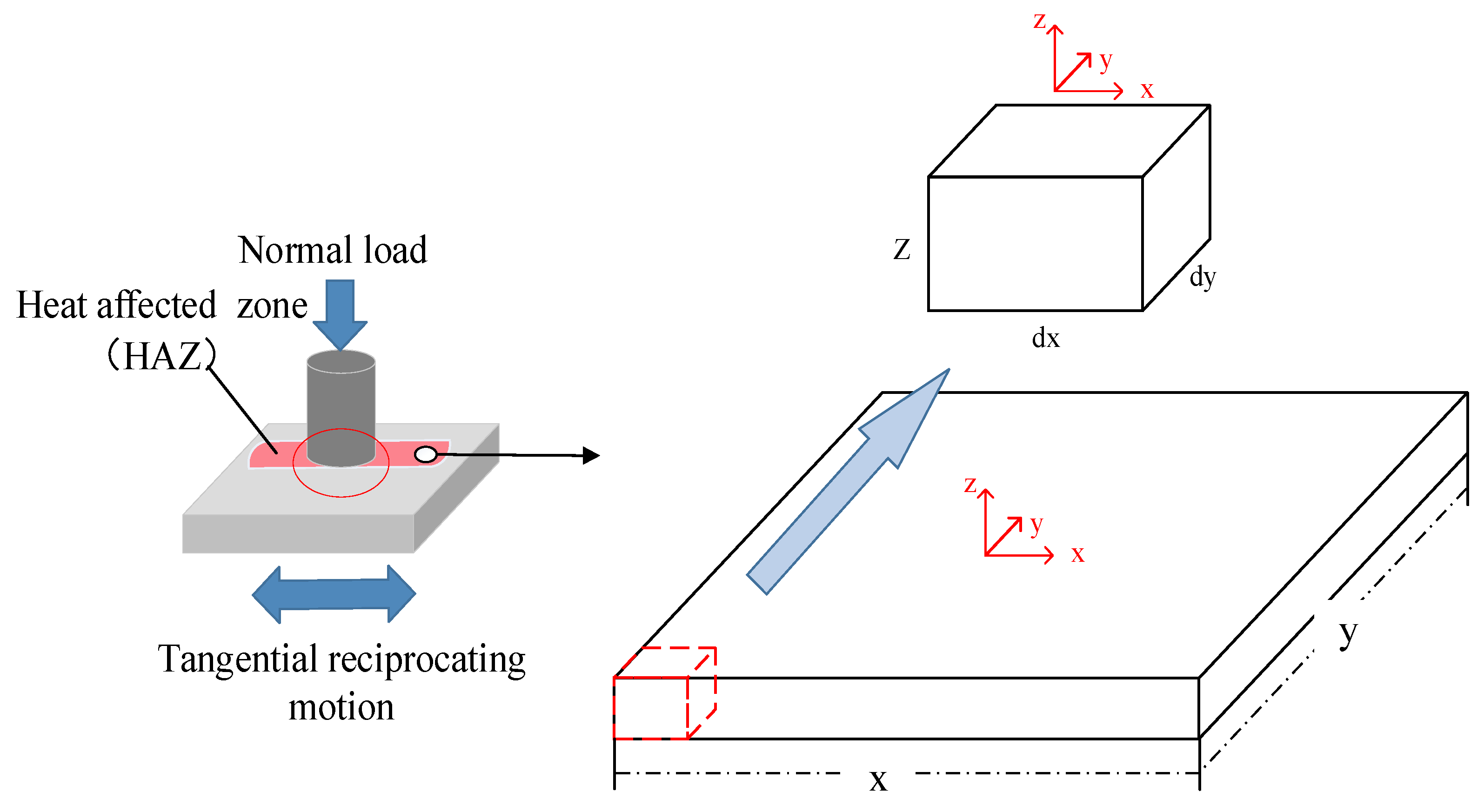

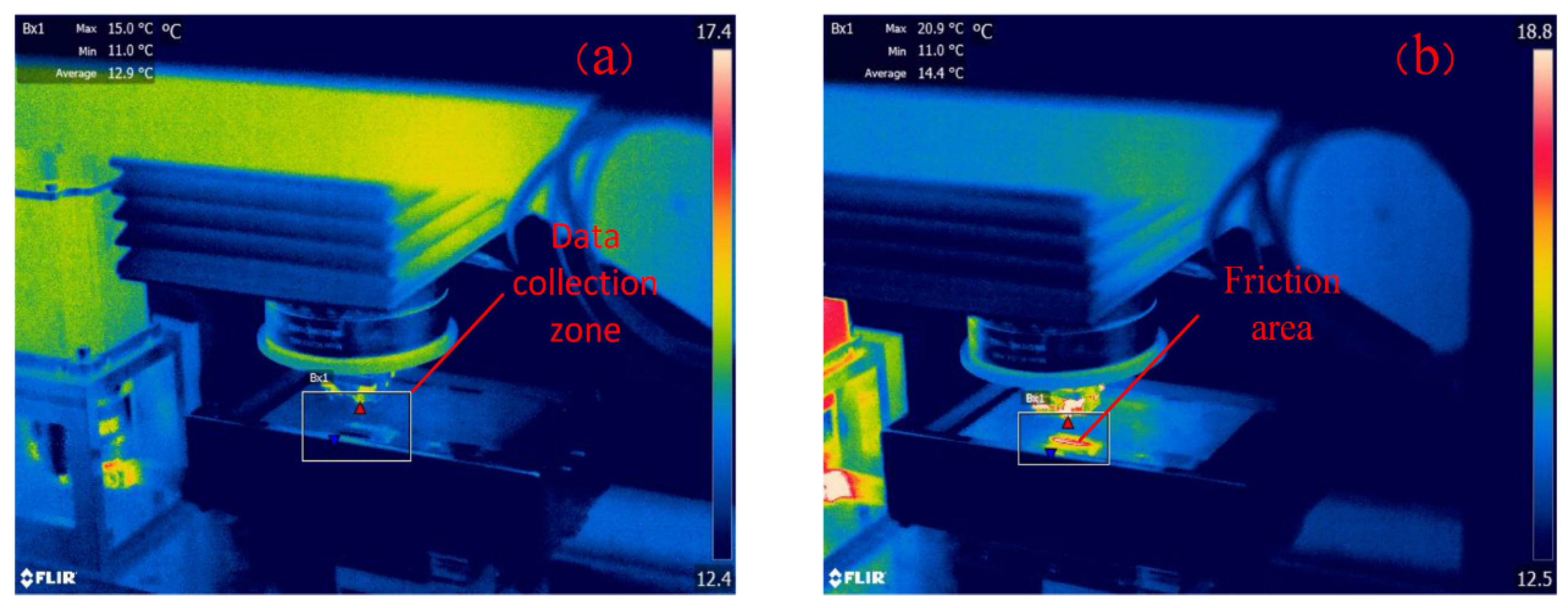
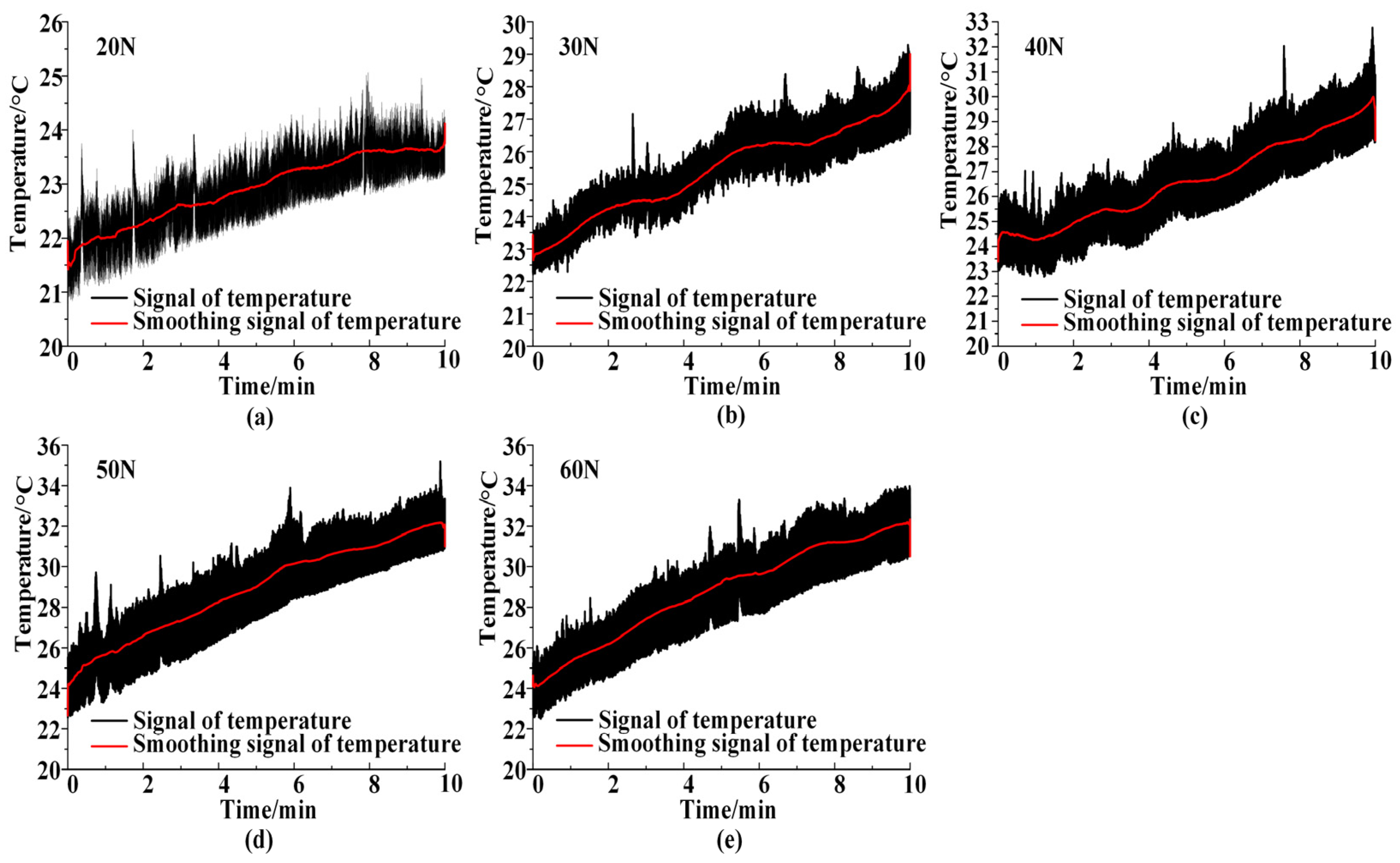
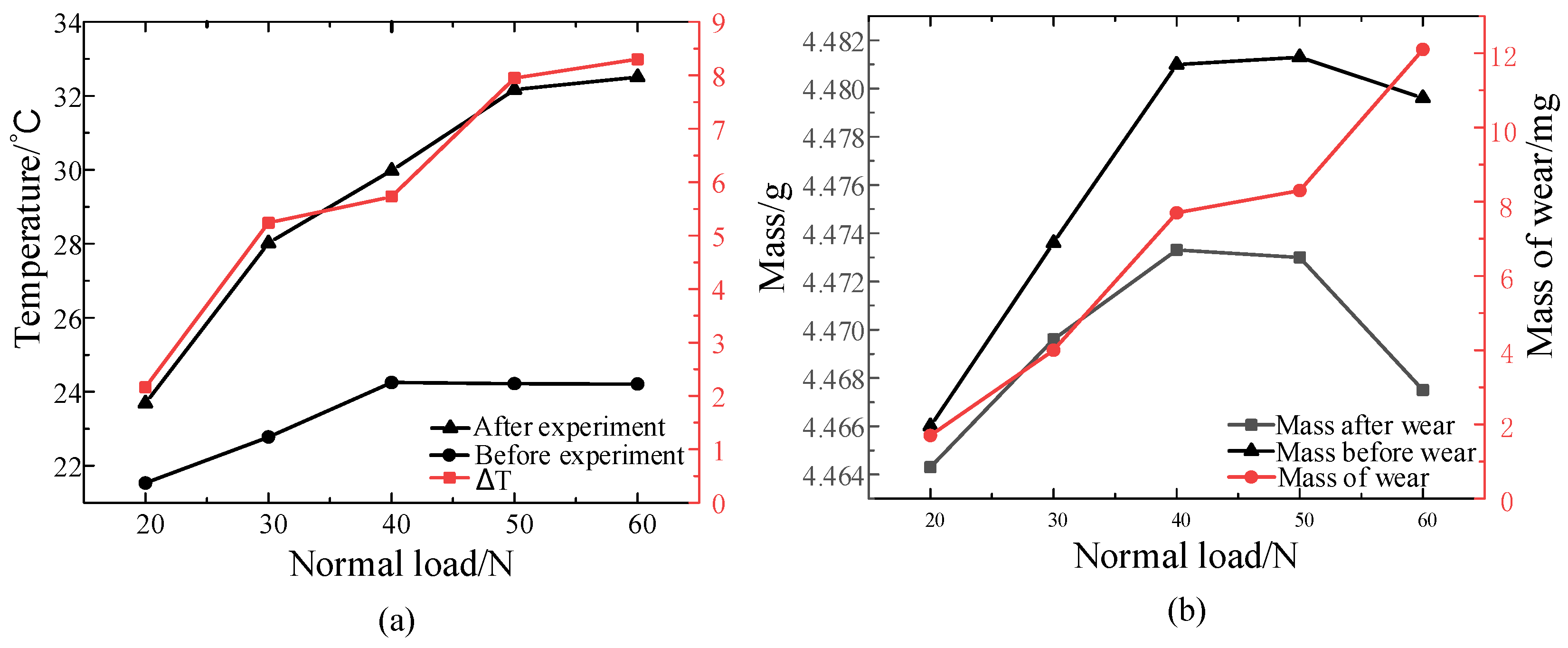
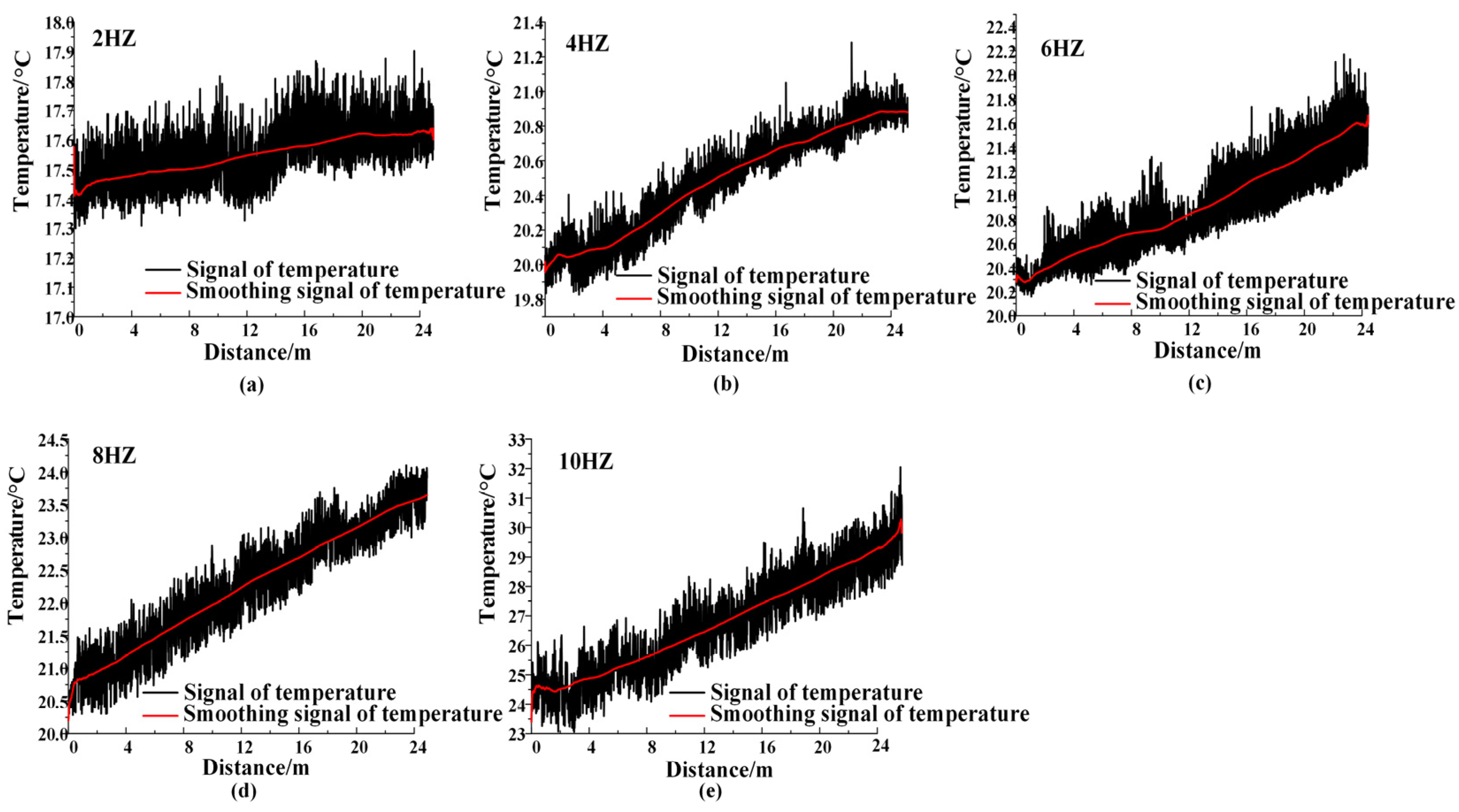

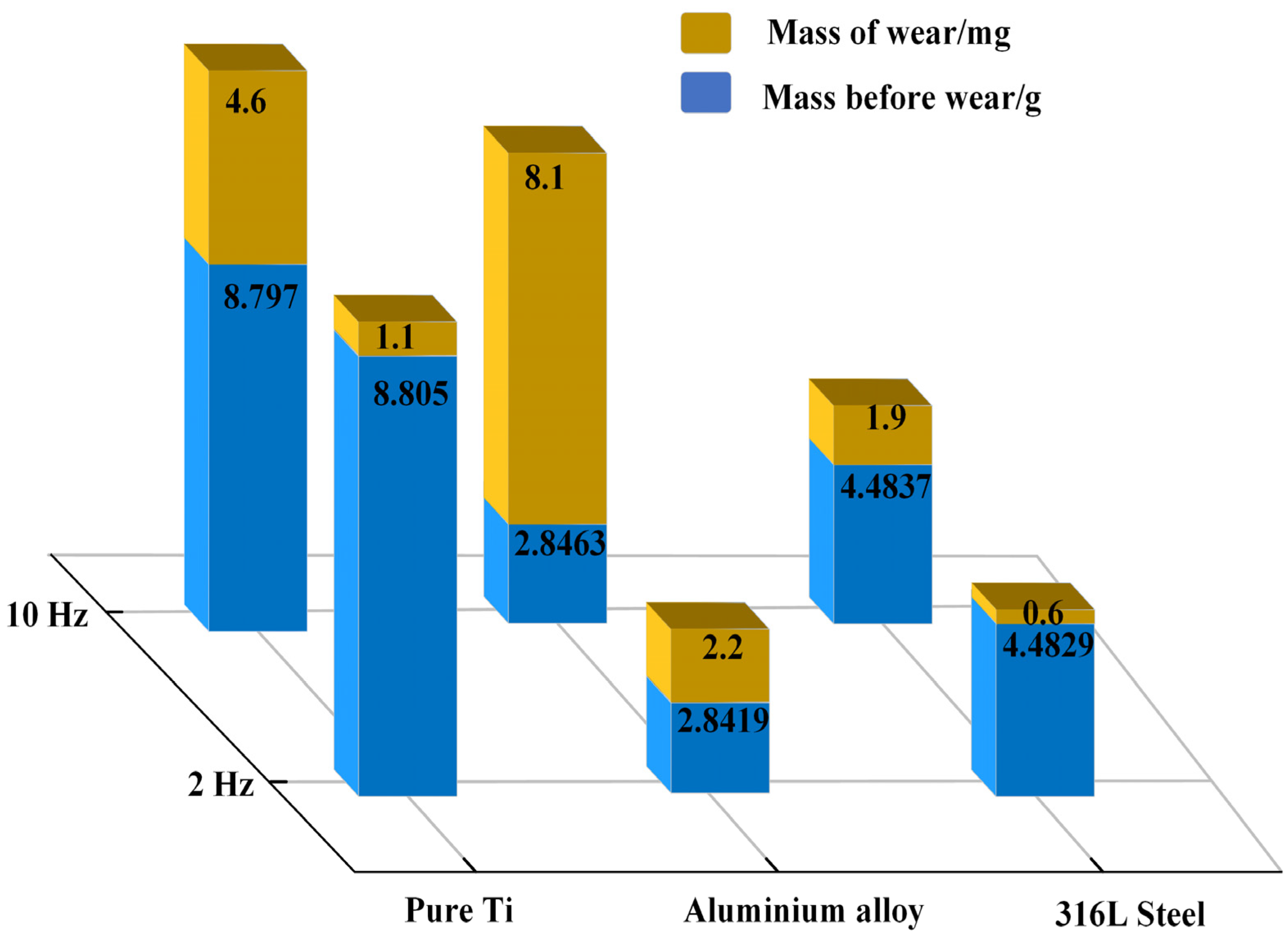
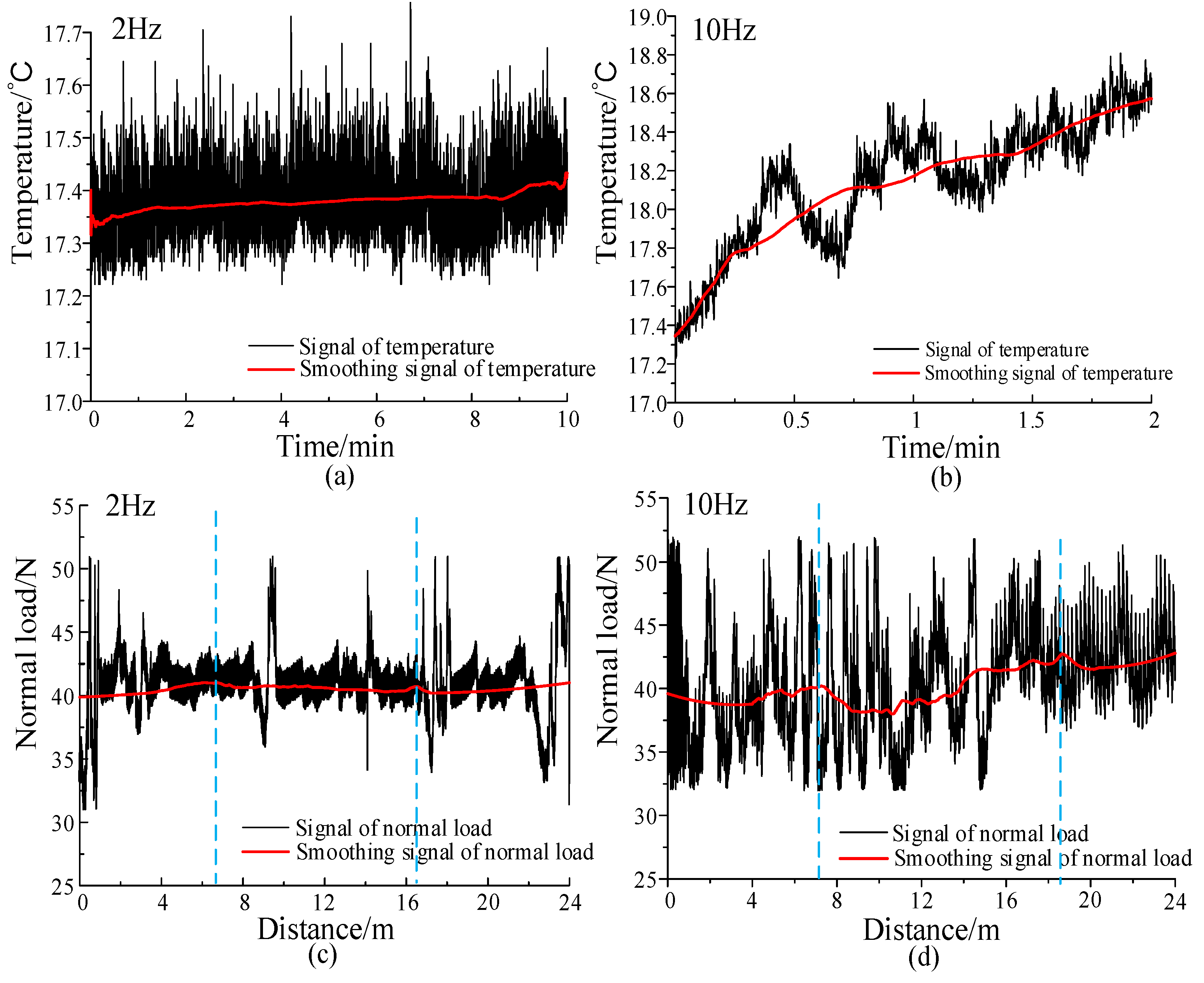
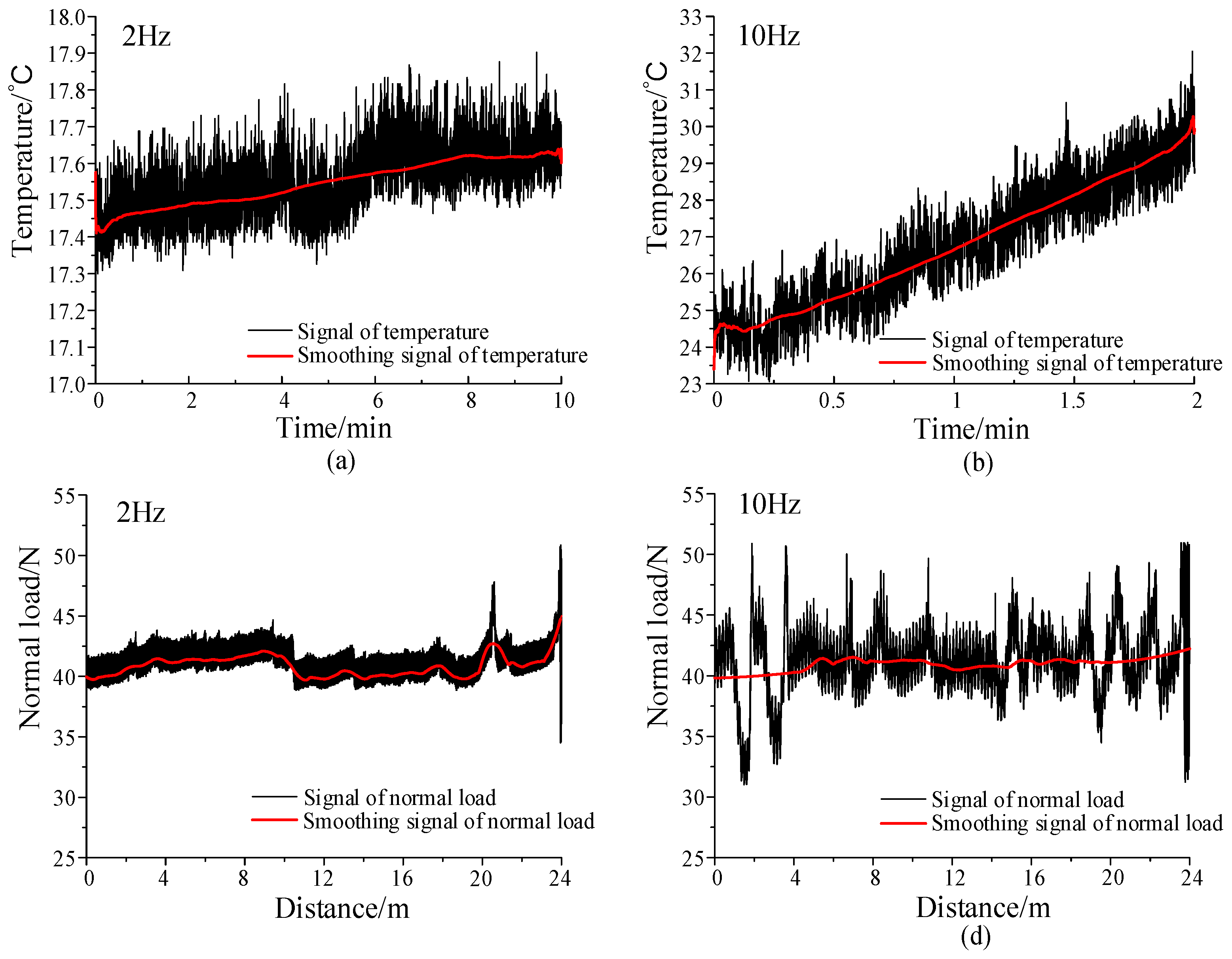
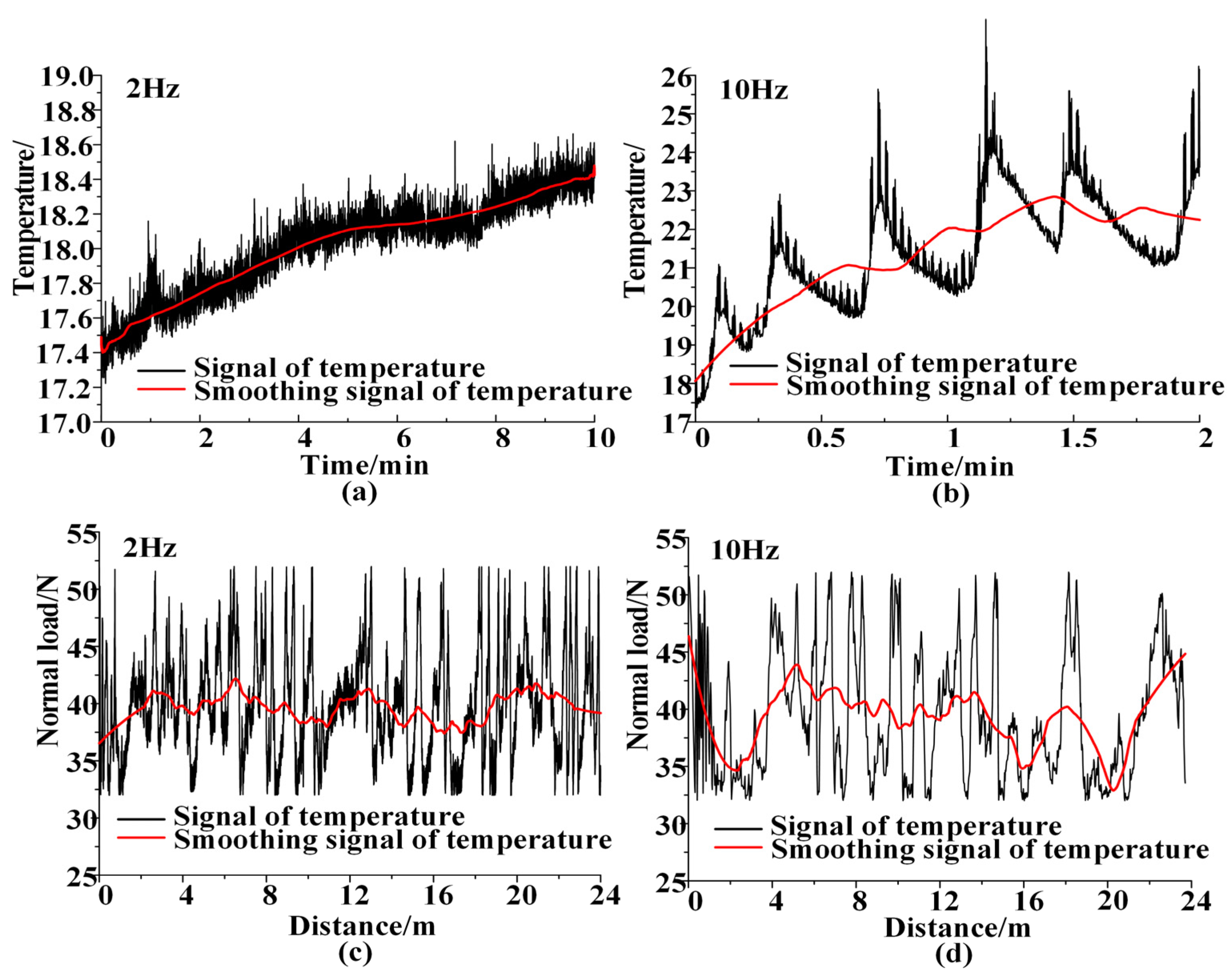


| Parameter | Frequency/ (Hz) | Time/ (min) | Pressure/ (N) | |
|---|---|---|---|---|
| Number | ||||
| 1 | 2 | 10 | 40 | |
| 2 | 4 | 5 | 40 | |
| 3 | 6 | 3.3 | 40 | |
| 4 | 8 | 2.5 | 40 | |
| 5 | 10 | 2 | 40 | |
| Parameter | Frequency/ (Hz) | Time/ (min) | Pressure/ (N) | |
|---|---|---|---|---|
| Number | ||||
| 1 | 10 | 10 | 20 | |
| 2 | 10 | 10 | 30 | |
| 3 | 10 | 10 | 40 | |
| 4 | 10 | 10 | 50 | |
| 5 | 10 | 10 | 60 | |
| Parameter | Frequency/ (Hz) | Slip Distance/ (m) | Pressure/ (N) | |
|---|---|---|---|---|
| Material | ||||
| 316L | 2/10 | 24 | 40 | |
| Pure titanium | 2/10 | 24 | 40 | |
| 5A06 aluminium alloy | 2/10 | 24 | 40 | |
| Parameter | K | E/(Gpa) | H/(Mpa) | (kg/m3) | APL/ (1/°C) | |
|---|---|---|---|---|---|---|
| Material | ||||||
| Pure Ti | 2.03 × 10−4 | 110 | 284 | 4510 | 10.5 × 10−6 | |
| Aluminum alloy | 1.90 × 10−4 | 70 | 224.25 | 2700 | 23.6 × 10−6 | |
| 316L Steel | 0.2 × 10−4 | 193 | 310 | 7980 | 17.3 × 10−6 | |
Disclaimer/Publisher’s Note: The statements, opinions and data contained in all publications are solely those of the individual author(s) and contributor(s) and not of MDPI and/or the editor(s). MDPI and/or the editor(s) disclaim responsibility for any injury to people or property resulting from any ideas, methods, instructions or products referred to in the content. |
© 2024 by the authors. Licensee MDPI, Basel, Switzerland. This article is an open access article distributed under the terms and conditions of the Creative Commons Attribution (CC BY) license (https://creativecommons.org/licenses/by/4.0/).
Share and Cite
Sun, Q.; Zheng, D. Experimental Analysis and Wear Prediction Model Based on Friction Heat for Dry Sliding Contact. Coatings 2024, 14, 742. https://doi.org/10.3390/coatings14060742
Sun Q, Zheng D. Experimental Analysis and Wear Prediction Model Based on Friction Heat for Dry Sliding Contact. Coatings. 2024; 14(6):742. https://doi.org/10.3390/coatings14060742
Chicago/Turabian StyleSun, Qiming, and Dayu Zheng. 2024. "Experimental Analysis and Wear Prediction Model Based on Friction Heat for Dry Sliding Contact" Coatings 14, no. 6: 742. https://doi.org/10.3390/coatings14060742
APA StyleSun, Q., & Zheng, D. (2024). Experimental Analysis and Wear Prediction Model Based on Friction Heat for Dry Sliding Contact. Coatings, 14(6), 742. https://doi.org/10.3390/coatings14060742





